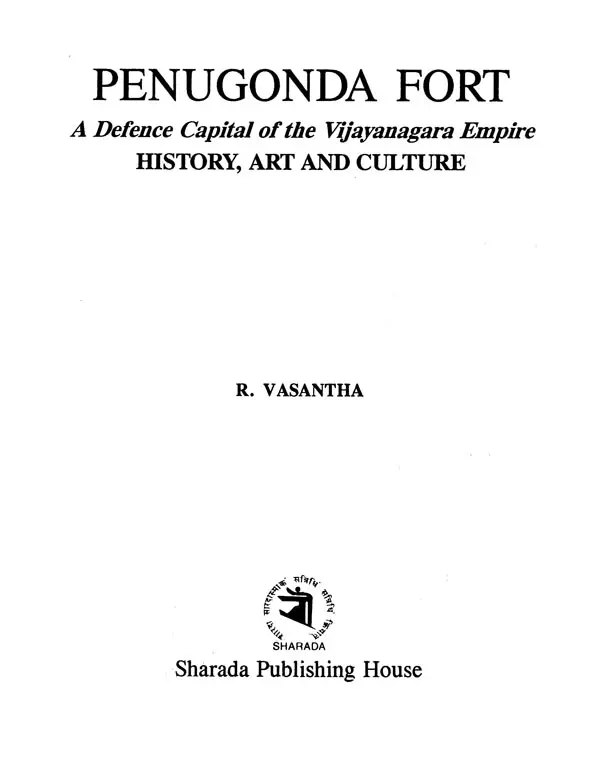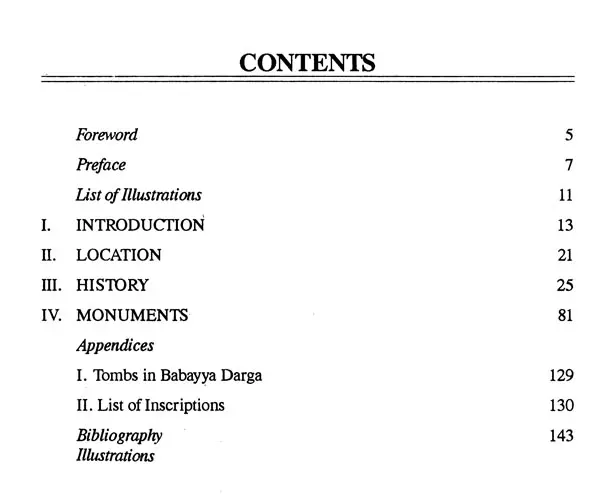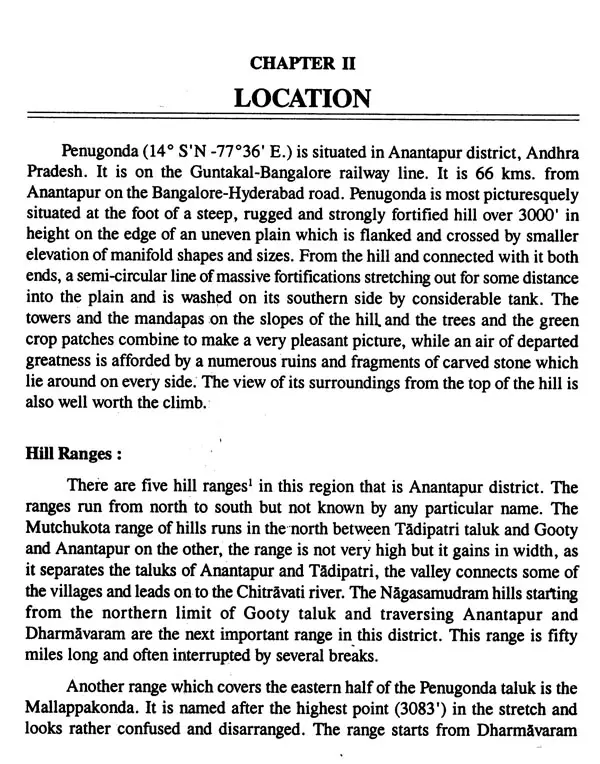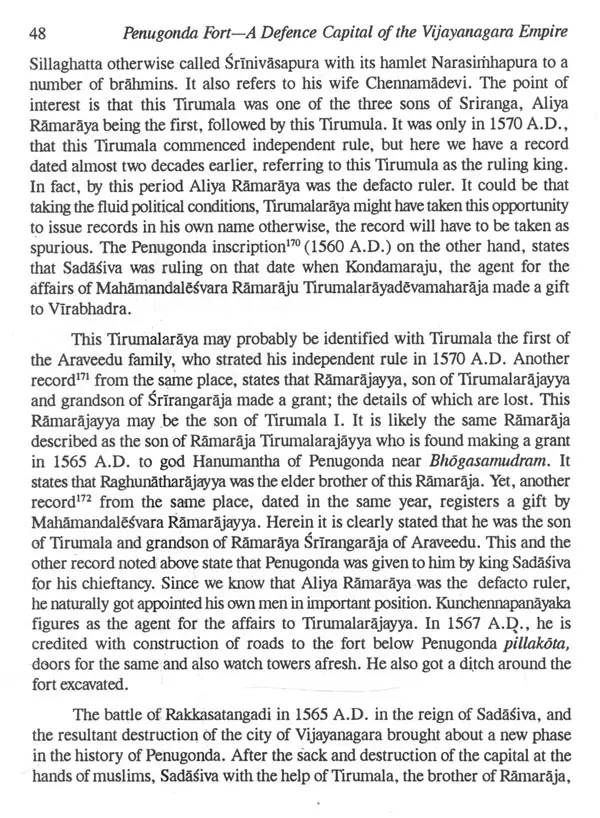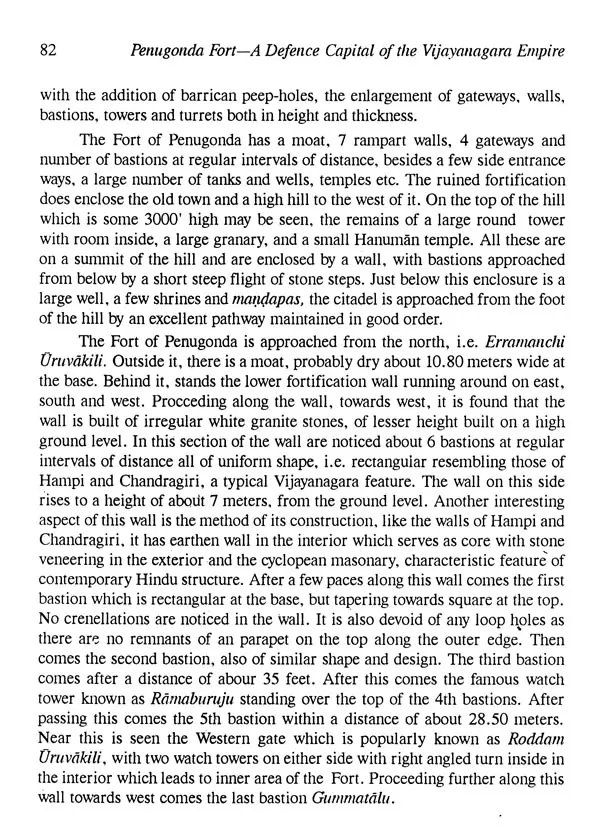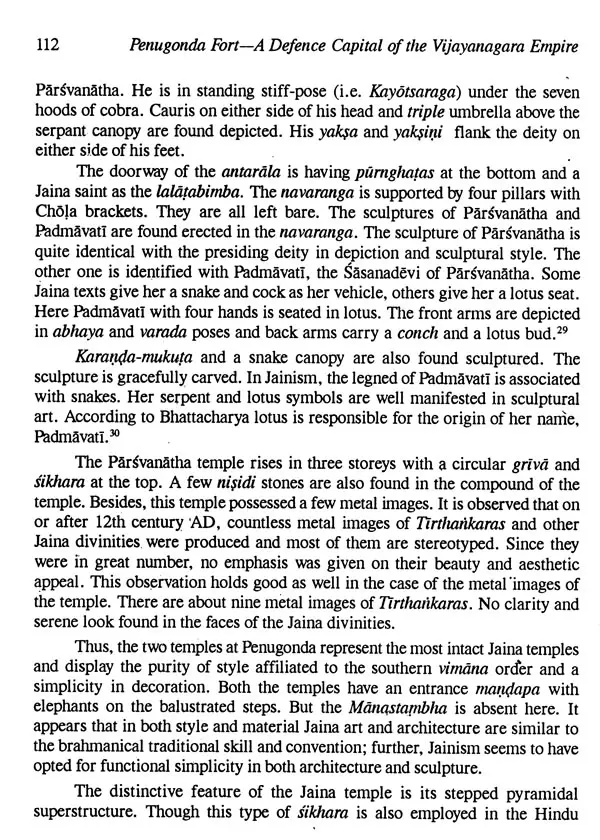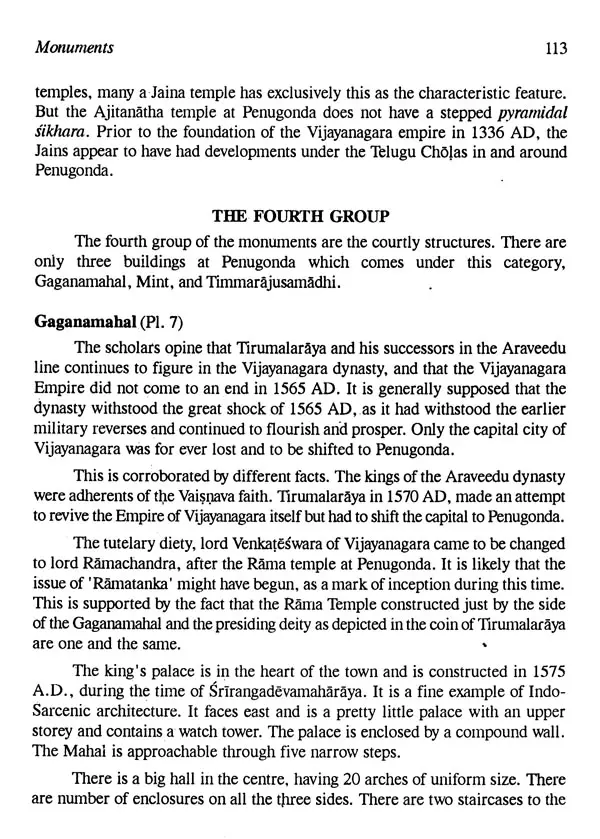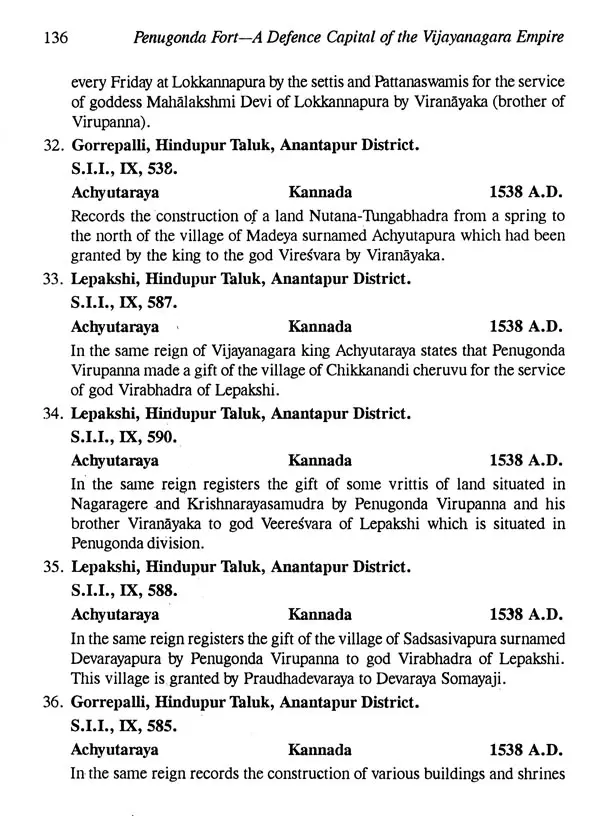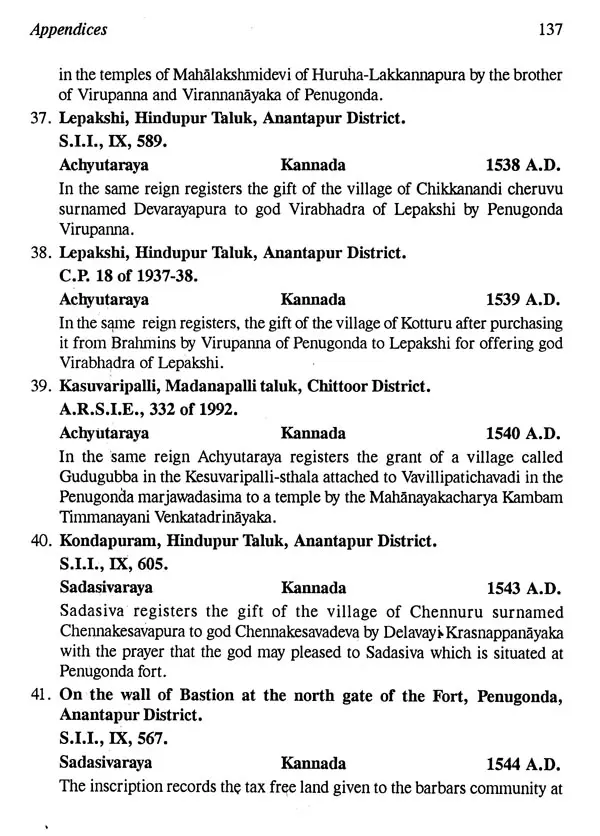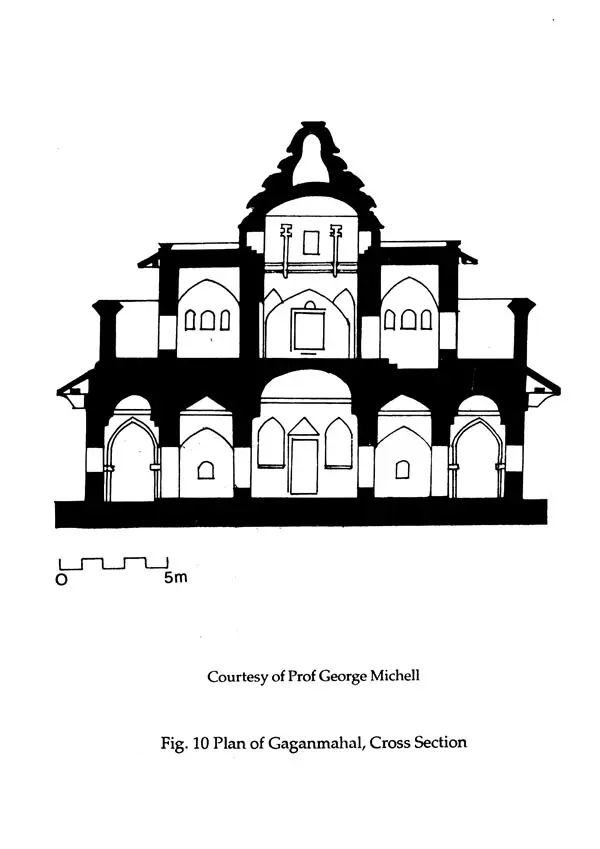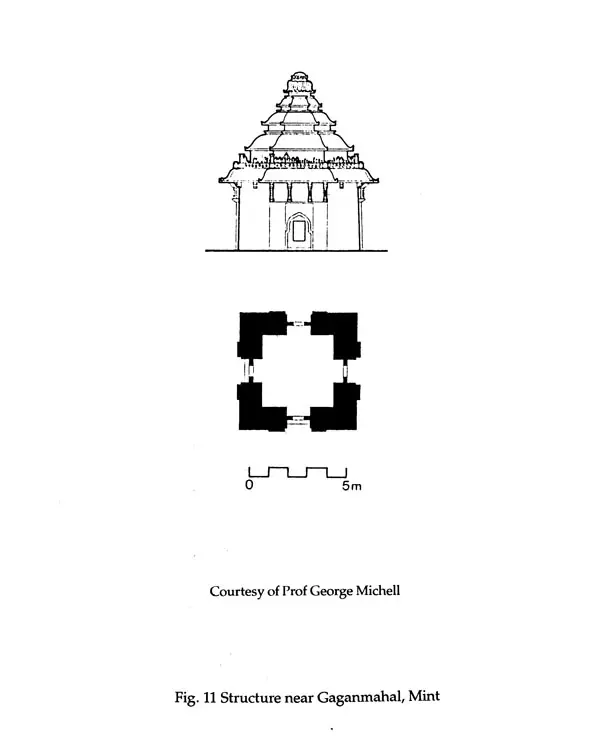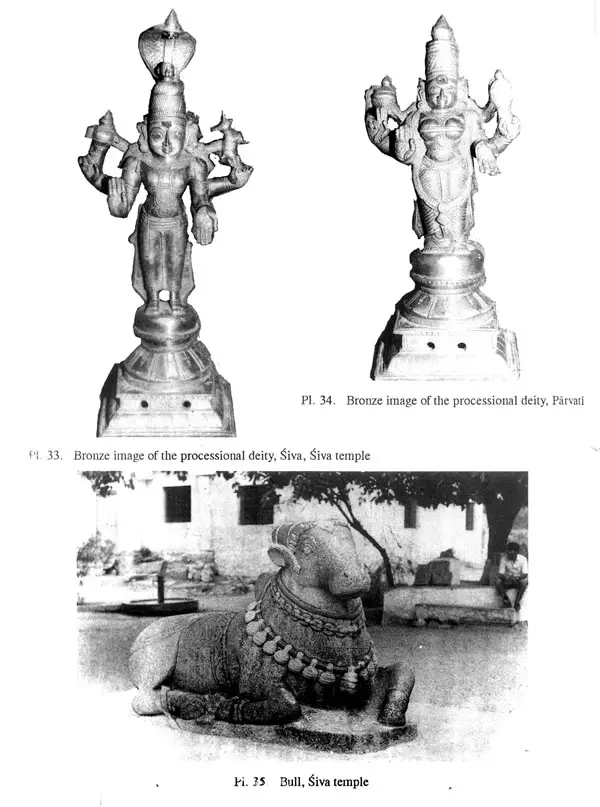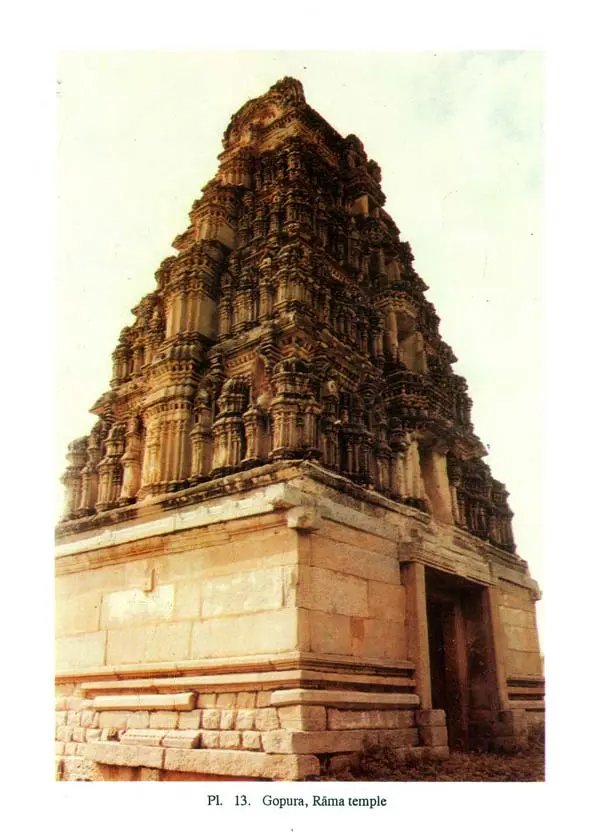
Penugonda Fort- A Defence Capital of the Vijayanagara Empire (History, Art & Culture)
Book Specification
| Item Code: | UAG274 |
| Author: | R. Vasantha |
| Publisher: | Sharada Publishing House, Delhi |
| Language: | English |
| Edition: | 2000 |
| ISBN: | 818561668X |
| Pages: | 182 (Throughout B/w and 12 Color Illustrations) |
| Cover: | HARDCOVER |
| Other Details | 10.00 X 7.50 inch |
| Weight | 590 gm |
Book Description
Penugonda geographically occupies a strategic position. It controls a threshold midway between the Western Ghats and the lowlands of the eastern coast. Located in the dry uplands of Rayalaseema it was not coveted by the rulers of Southern India because it commanded a fertile environment but because the rugged hill on which the fort was built provided them with a stronghold in a crucial area. The Hoysalas established an outpost here so as to defend their conquests against their rivals in the east. When the rulers of Vijayanagara replaced the Hoysalas, Bukka moved to Penugonda. This indicated the thrust towards the south of this newborn empire.
Special attention has been devoted in this book to the religious history of this town which was a centre of . worship for Hindus, Jains and Muslims as numerous rulers built and maintained temples and mosques. In addition to evaluating the inscriptions, the author has provided detailed plans and descriptions of the major temples and surveyed the images installed in these temples. This will be of special interest to art historians.
Located in the dry uplands of Rayalaseema it was not coveted by the rulers of Southern India because it commanded a fertile environment, but because the rugged hill (3000 feet) on which the fort was built provided them with a stronghold in a crucial area. The Hoysalas established an outpost here so as to defend their conquests against their rivals in the East. When the rulers of Vijayanagara replaced the Hoysalas, Bukka moved to Penugonda. This indicated the thrust towards the South of this newborn empire.
The history of such strategic localities has so far been neglected in the historiography of medieval India. The predominant tendency has been to concentrate either on dynastic history or to present a broad spectrum of the social and administrative history of a larger region. Prof. Vasantha has opted for a different access to the history of Southern India by providing a detailed synthesis of the inscriptional evidence for the importance of Penugonda from the 14th to the 17th century A.D. The inscriptions have all been published earlier, but they had remained isolated fragments as nobody had tried to put them together so as to construct a colorful mosaic from which the contours of Penugonda emerge very clearly.
Prof. Vasantha has devoted special attention to the religious history of this town which was a centre of worship for Hindus, Jains and Muslims as numerous rulers built and maintained temples and mosques here. Many of the inscriptions refer to grants given for this purpose. Not all grants were given by the rulers.
Local officers and even merchants also appear as donors in these inscriptions.
On rare occasions the reader even gets an insight into religious disputes such as that between Jains and Bhaktas (Srivaishnavas) who approached Bukka in 1368 and were told by the wise king that their faiths were equally good.
In addition to evaluating the inscriptions Prof. Vasantha has provided detailed plans and descriptions of the major temples. She has also surveyed the images installed in these temples. This will be of special interest to historians. In fact, the chief merit of this book is that it has provided a firm foundation for further research work. It is to be hoped that more of such excellent monographs on important historical localities will be published. Prof. Vasantha has set a good example which ought to be followed by the other scholars.
I greatly acknowledge the help and suggestions rendered by Prof. S. Nagaraju, Rtd. Prof.' of History, University of Hyderabad, Hyderabad, Prof. Radha-Krishna Sarma, emeritus Prof. of History and Archaeology, Osmania University, Hyderabad and George Michell, London in completing the monograph. My earnest thanks to the people of Penugonda, who enlightened me with valuable information’s. My heartfelt thanks to Sri B.L. Bansal, Sharada Publishing House, ·Delhi who has taken a lot of trouble and a personal interest in publishing of this book.
Many of these are concerned with either the history or the architectural aspects of the place. There are number of works which deals with places in brief and are available as monographs. 1 Even though many researchers have gone into the study of various historical and archaeological places, their comprehensive studies are not available.
Anantapur District in Andhra Pradesh is one such region which is rich historically and archaeologically. Unfortunately not much work has been done on these lines by scholars. Therefore it is felt that a comprehensive study of a historically important place in this region would be of immense value. And in this connection, we choose Penugonda, one of the important Historic centers on two counts. The first aspect that attracted our attention towards this place is it has considerable architectural, epigraphically and literary data useful for a systematic study. Secondly, Penugonda was well-known as one of the capitals of the Vijayanagaras (in Andhra Pradesh). The present book provides an additional information of the continuity of the Vijayanagara rule after giving up Vijayanagara as their Capital. In addition to this we try to make a detailed study, how Penugonda and its surroundings were important even in the pre- Vijayanagara times, an aspect which has not been explored by any historian to this day.
Firstly, we provide a clear picture of the history of the place, right from the prehistoric time to the present day. In doing so we find Penugonda and its surroundings had enjoyed as capitals of the different dynasties and continue to enjoy the same status under the Vijayanagaras. Secondly we have made a detailed study of all monuments religious, secular and military. We have also tried to fix up the dates of the monuments through epigraphically data or by their stylistic features baring a few, which are in dilapidated condition.
The sources available for the study of this place, as usual for any other historical subject, include both archaeological and literary material. Firstly, the place is sufficiently big and has number of antiquities, though not much development took after the Vijayanagara period. The different architectural and sculptural features here speak about the importance given to this place by the different Vijayanagara rulers. Thus enough material is available to make a study of the growth and decline of this place on the basis of architectural data itself. Also, there are number of consecrated and decorative sculptures providing a rich array of material for stylistic and iconographic study.
Secondly, there' are altogether sixty three inceptions? available at Penugonda. Out of these twenty five inscriptions are in Penugonda itself engraved on the fort walls, fort entrances, steps of the water tanks, temple walls. Among the other inscriptions one is copper plate record, some inscriptions are in Kannada script and language, a few are in Sanskrit language and Graniha script and others in Telugu language and script. The earliest of these inscriptions belong to the Ballala III and the latest to the time of the Harbatanat Saheb in 1856 A.D. Most of the inscriptions are donatory records.
Book's Contents and Sample Pages
